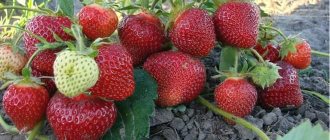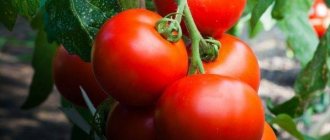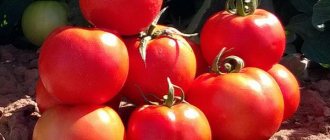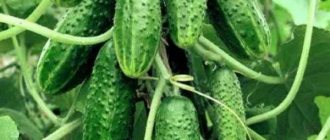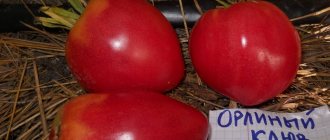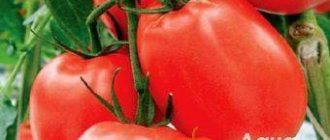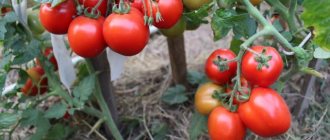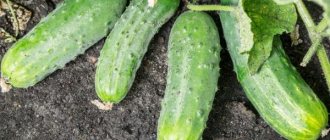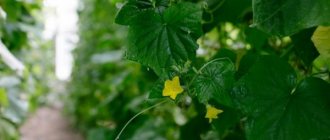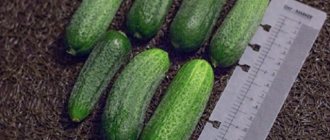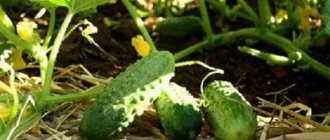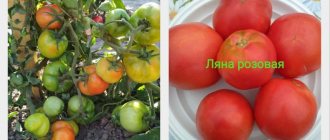Characteristics and description of the variety
Khrustik F1 is the result of the work of Russian breeders. It was bred agro and, being a hybrid, has a set of special characteristics that will be discussed below.
Did you know? From a botanical point of view, a cucumber is
a berry, not a vegetable. Pakistani traditional cuisine agrees with this, including many sweet desserts with cucumber.
Description of the bush and fruits
The bush of this variety is indeterminate and is a powerful, vigorous vine, capable of reaching 3–3.5 m in height. The leaves are not too large, dark green, with clearly visible veins. The fruits of Khrustik are “dressed” in the so-called “Dutch shirt” (thin but dense peel with medium-sized tubercles, more frequently spaced than those of ordinary domestic greens).
It is this peel that makes the hybrid ideal for pickling. Cucumbers are cylindrical in shape and grow up to 10–12 cm in length and 100–110 g in weight. The spines on the tubercles are white. The fruits are sweet, juicy, crispy, aromatic. They are genetically free of bitterness and seeds.
Fruitfulness
Khrustik belongs to the parthenocarpics (has a female type of flowering). The hybrid is characterized by a bouquet (bunch) type of fruiting: 7-8 ovaries are formed in the leaf axils. All of the above makes the variety independent of insects for pollination and high-yielding (up to 12 kg per 1 m²).
Find out more about the benefits and harms of cucumbers.
Ripening and flowering dates
Flowering time depends on weather conditions and is approximately 30–40 days from the moment of sowing the seeds (after the appearance of 5-6 leaves). Khrustik is an early variety, and the first fruits can be expected within 44–48 days after emergence.
Some information about the hybrid
The characteristics and description of the variety are as follows:
- The formation of cucumbers from the ovary occurs over the course of a week. The vegetative period from the first shoots to harvest lasts 35-40 days. All varieties similar to the one described are characterized by their independence from pollination by bees.
- The hybrid produces only female inflorescences.
- The height of the Khrustik cucumber bush reaches 120 cm; large leaves, painted in dark tones of green, grow on the branches.
- 3 or 4 ovaries develop in each sinus.
- Cucumbers have the shape of a cylinder with oval ends. The skin of the vegetable is thin, colored in dark shades of green. It is covered with tubercles and spines. Thin white lines run across the entire surface of the fruit.
- The length of the fruit reaches 100 mm with a diameter of 3 cm. The weight of each specimen reaches 80 g.
Reviews from gardeners growing the hybrid show that its yield reaches 10-11 kg of fruit from each bush. Farmers note that the plant is resistant to diseases such as powdery mildew, root rot, and cucumber mosaic virus. But the hybrid often gets sick with downy mildew.
The described variety belongs to heat-loving plants, therefore in Russia they prefer to grow it in open areas in the southern regions of the country. In the middle zone and northern regions, it is recommended to grow Khrustik only in heated greenhouses and greenhouses.
Pros and cons of the variety
- The popularity of this hybrid is contributed to by:
- excellent taste of fruits;
- versatility in use (good both fresh and for pickling);
- high productivity;
- early ripening;
- resistance to temperature changes;
- high immunity to diseases;
- absence of bitterness and yellowness of fruits;
- almost 100% seed germination;
- good keeping quality.
Unlike ordinary greens, the parthenocarpic hybrid does not require pollination by bees and other insects, which allows it to be grown both in open ground and in a greenhouse. At the same time, belonging to parthenocarpics means that the fruits do not have seeds, so it will not be possible to prepare planting material yourself.
This can be considered some disadvantage of the variety. Another nuance of growing the Khrustik hybrid is the formation of numerous ovaries and, as a result, abundant fruiting. Gardeners should not delay harvesting so that ripened fruits do not interfere with the growth of new ones.
Cucumber F1 Miracle Crunch – the whole bush is covered in cucumbers!
Do you like to crunch green juicy cucumbers from the garden like I do? Then there is no reason to refuse the early ripening hybrid Miracle Khrustik. This means we will continue testing and look at the results!
Cucumber F1 Miracle Crunch Let me remind you that I planted cucumber seedlings on May 19 in beds in open ground. To protect them from the bright sun and wind, I shaded them with covering material on top of the trellises, and the young bushes were provided with a suitable microclimate. Cucumbers love organic matter very much, so I don’t spare compost in each hole, now there will be enough food until active fruiting. You can read about sowing and planting cucumber seedlings in the reports on the first and second stages.
Let's go to the garden in order
In the greenhouse, the seedlings have taken root well and are actively growing, with ovaries appearing in each node. In the axils of the lower three leaves I pluck out both the ovaries and the side shoots that have appeared; I leave them above the ovaries and remove only the shoots. Thus, I form the cucumber into one stem. No fertilizing is required yet, watering is sufficient. I water with a hose with tap water, and the soil is mulched with grass clippings.
The growth and development of Miracle Khrustik is encouraging
By the end of June, the cucumbers are ready to eat; now you must pick the fruits every 2-3 days. In June the weather is warm, cucumbers like it and they fill up quickly. I prefer to grow cucumbers up to 10 cm; I don’t like very small gherkins.
The long-awaited first cucumbers The cucumbers are smooth, with thin skin, the seeds are small, the taste is wonderful, aromatic, juicy and, of course, crispy, this is Khrustik!
These cucumbers suit me very much
Since the end of June, fruiting has been intensifying, now we can support our plants and feed them. For cucumbers, I use nettle infusion (once every two weeks).
If you don't feed the plants, you won't eat the cucumbers!
The bouquet type of flowering is very noticeable: a whole bunch of baby cucumbers is tied above each leaf.
"Bouquets" in each node
July greeted us with cold rains, the weather was not at all cucumber-like, and there was not enough warmth. But the cucumbers continue to grow, I just have time to pick them! I’m so glad that I didn’t remove the covering material from the cucumber beds; it used to save me from the sun, now it protects me from the cold wind.
Cucumbers are not afraid of either heat or cold. These are the results from three bushes, which occupy 0.54 m² in the garden bed. One square meter would yield 32,438 grams of cucumbers. How much was promised by the manufacturer, 10-11 kg/m²? Nonsense! 32 kg easy!
Thank you very much Aelita for the excellent hybrid Miracle Khrustik and for entrusting me with testing it.
Agricultural technology of sowing and growing
As already mentioned, this hybrid feels quite at ease both in protected and in open ground. Consider the features of growing the Khrustik variety in a greenhouse and in beds without shelter.
In the open ground
Most often, cucumbers are bred through seedlings, as this speeds up the rate of fruit production, but direct planting of seeds in the ground is also possible. In the latter case, planting is carried out after the threat of return frosts has passed (in the second half of May), provided that the soil has warmed up to at least +16°C. To do this, the seeds are lowered into a groove 2-3 cm deep.
The distance between seeds should be about half a meter. Then the seeds are sprinkled with moistened soil and dusted with ground black pepper (this will help repel rodents and insects). In the event of a sharp drop in temperature after sowing, the future seedlings are covered with special caps or a frame film cover. Seeds are sowed for seedlings in the last ten days of April.
Important! Hybrid seeds are ready for sowing and do not require additional processing. Moreover, it can cause harm by removing applied growth stimulants from the surface of the seeds.
The algorithm for growing seedlings is as follows:
- Seeds are planted in peat tablets or in boxes filled with disinfected, well-moistened soil mixture (leaf soil + peat + sand + vermicompost).
- The seeds are placed in pairs on the soil or in a small depression (1 cm) and sprinkled with soil.
- Future seedlings are sprayed with warm water from a spray bottle, covered with film and placed in a warm place (optimum temperature +25°C). The film is lifted to allow fresh air to enter every day.
- Before emergence, the seedlings are not watered, but lightly sprayed, focusing on the condition of the earthen coma.
- After complete germination, the seedlings are placed in a well-lit place (window sill of a south window).
- After the leaves appear, the air temperature is reduced to +18...+22°C.
- Two weeks before planting in the ground, the seedlings begin to harden, leaving them in the fresh air for 20 minutes a day at first and increasing the stay time to 8 hours. Weather conditions for hardening exclude precipitation, strong winds and air temperatures below +12°C.
Video: sowing cucumber seeds for seedlings
Seedlings are planted in open ground at the end of May, after at least 2-3 true leaves have appeared and the soil has warmed to +16...+18°C. The distance between the bushes should be 30 cm, and the row spacing should be 70 cm. The place for the beds should be sunny and protected from the wind.
In the greenhouse
Parthenocarpic hybrids develop excellently and bear fruit in unheated greenhouses. The conditions are similar to the requirements for planting seedlings in open ground: the presence of several leaves and pre-hardening. However, the planting dates are slightly delayed. Seedlings can be placed in the greenhouse as early as the beginning of May, and therefore, seedling cultivation can begin in the first ten days of April.
Read more about how to properly grow cucumbers in a greenhouse.
Depending on the size of the greenhouse, 2–4 rows of bushes are formed. In a row, seedlings are placed in ridges 20 cm high with a step of 30 cm. It is not recommended to thicken plantings due to the increased light-loving nature of cucumbers. For the same reason, it would be useful to install additional lighting: with a blue spectrum at the beginning of growth, with a red spectrum during the flowering and ovary period. When using sources of additional lighting, you need to remember about the mandatory 6-hour break for the proper flow of biological processes.
Cucumber Khrustik F1
The variety is very sensitive to weather changes, excessive heat and prolonged rains, so the best option is to grow it in a greenhouse. I tried to grow it in open ground under a film. The seedlings produced strong bushes, but the yield was noticeably lower. The variety is not distinguished by early ripening; I get the first harvest after 7 weeks. In one node, 3 ovaries are usually formed, rarely their number increases to 7. The yield for a modern hybrid is average - 10 kg per 1 sq. meters. Ripe cucumbers pickle well whole and cut. The density and crispness of the pulp does not decrease, the bright aroma remains.
Khrustik grows well at home, I collect 30-45 fruits from it. From the beginning of autumn to the end of December, it is necessary to organize additional artificial lighting. The soil can be anything, but it must be rich in nutrients and well loosened. You can prepare the soil yourself (you need to mix soil, ash, sawdust, sand and humus strictly in certain proportions), I buy ready-made store-bought varieties, specially adapted for growing cucumber crops. For one plant, the optimal amount of soil is 5 liters. Regular, abundant watering is of great importance, but the water must be warm, otherwise root rot will develop. Banana peel diluted with water is well suited for feeding at home. I do pinching periodically to stimulate the appearance of side shoots and to avoid the appearance of a large number of barren flowers. When heating radiators become more active, I constantly spray the plants with a spray bottle or place a bucket of water in the room. I tried to grow Khrustik in the garden on unprotected soil, no problems. Development and fruiting are normal if standard agricultural practices are followed.
This hybrid is only suitable for growing in greenhouses, but I decided not to bother and planted them in an open garden bed. I planted the seeds in shallow holes 4-5 cm deep, then covered the bed with film and left it. As soon as the first shoots appeared, I removed the film, tied it to a trellis as the plant grew, and mulched it with sawdust. The growth is decent, the first shoots appeared after 39 days, despite the fact that I didn’t take much care of the garden bed - I just watered it, fertilized it, there weren’t any particular difficulties in caring for it. The flowers were pollinated on their own, without the participation of bees. This is not a completely self-pollinating hybrid, the difference is that self-pollinating ones have seeds in the fruits, but there is no sign of them. There are 3 female flowers in a node, 6-7 bouquets in a bush. The fruits have white spikes, which indicates that the peel is thin and crisp, without bitterness. The cucumbers are not very large, but tasty, there really are no seeds inside. During this entire time the bushes were almost painless, and they survived a slight cold snap safely. We caught a spider mite, at first I simply picked off the damaged leaves, then treated it with a farmer (12 ml per 1 liter of water), it helped. But I advise you to handle this product very carefully and wear gloves.
I planted it for the first time after buying a bag from Gavrish. All seeds have sprouted! We grew them as seedlings and planted them with 4-5 leaves in a greenhouse in early May. Already on July 10th we tried cucumbers. Subsequently, the harvest was so abundant that they did not have time to harvest until September! Watering and fertilizing were always done as soon as possible. We came to the dacha on weekends: there were plenty of cucumbers, overgrown, but always of good taste, with small seeds, crunchy and not at all bitter. If you water them a day later, the vine will again be full of young greens. We bring a lot home, they will retain their appearance and taste for just 5-6 days until the next trip to the country.
Features of care
Khrustik is quite unpretentious in care, but still requires standard agrotechnical measures: watering, fertilizing, weeding and bush formation.
Important! Cucumbers should be watered with warm water early in the morning - this way, by evening, not a drop of moisture remains on them, which can cause fungal diseases.
Watering and fertilizing
When it comes to watering, it is important to maintain a balance. Cucumbers do not like both waterlogging and insufficient moisture. On average, watering is done once a day, using 5–10 liters of water per 1 m². In rainy summers, watering is reduced.
For Khrustik, several feedings per season will be enough:
- application of nitrogen fertilizers at the beginning of growth (5 g of Ammophos is scattered into the ground and loosened);
- complex feeding during flowering (1 teaspoon each of potassium sulphide, urea, superphosphate and 1 glass of slurry diluted in 10 liters of water);
- fertilizing with a solution of wood ash (1 cup per 10 liters of water), a 2-day infusion of rotted hay, or foliar feeding on the leaves using a solution of urea (15 g per 10 liters of water).
You need to fertilize greenhouse cucumbers very carefully, as an overdose can be detrimental to the plants.
We advise you to learn about feeding cucumbers during flowering and fruiting.
Garter and bush formation
The central lash is tied to a vertical wooden trellis with synthetic ribbons. Next, the bush must be formed (to save space, prevent diseases and make it easier to collect fruits). Unlike ordinary greens, in parthenocarpic hybrids the central vine over the 5-6th leaf is not pinched, but the axils of the first 5 leaves are blinded (shoots and flowers are removed).
The remaining 6 side shoots with a length not exceeding 25 cm are not touched. The next few shoots are shortened to a length of 40 cm, and then the shoots are pinched to 50 cm. When the vine reaches its maximum height, the top is pinched. To circulate air near the rhizomes, the lower leaves are regularly removed.
Video: tying cucumbers to a trellis
Soil care
Loosening the soil is done once every 10 days, usually combining it with watering and weeding. The loosening process requires special care so as not to injure the root system. For loosening, a fork is used: they are stuck between the beds and pulled out without turning.
Summer residents who do not have the opportunity to spend a lot of time on loosening and weeding can carry out the mulching procedure (lining the soil with straw, mown grass, sawdust). This procedure is especially recommended for greenhouses. Mulching not only suppresses the growth of weeds, but also makes the soil more breathable and helps maintain its moisture.
Disease and pest control
Khrustik has good immunity against diseases: powdery mildew, mosaic, root rot. Downy mildew can spoil the cultivation of this variety. The disease is characterized by the appearance of yellow spots on the leaves and the fall of the ovaries. Downy mildew is caused by a fungus that is favored by cold, damp weather.
Prevention of the disease is:
- treatment of seedlings with sodium humate;
- compliance with the rules of watering and fertilizing;
- pinching shoots;
- compliance with crop rotation.
Learn about treating cucumbers against diseases with folk remedies.
The use of fungicides (Ridomil, Hom and Cabrio Duo) to treat affected bushes is permissible only before fruit set. Otherwise, the bush is removed and the soil is disinfected with antifungal agents.
Khrustik can also be infected by pests (spider mites, melon aphids). This can be prevented with the help of ladybugs (these insects are attracted by planting dill and mustard greens nearby). Bushes are also treated with solutions of wood ash, soap and tobacco (in case of aphid infestation) and infusions of celandine and dandelion (in case of mite infestation).
Harvest and storage
The first harvest can be harvested within a month and a half after full germination. The crunch is not prone to overgrowth, but it is recommended to collect the fruits at the beginning of fruiting every day, since the filling of the ovaries in the bunch is consistent, and ripened fruits can prevent the supply of nutrients to the still developing cucumbers. For pickling, it is best to pick gherkins 5–7 cm long - this will make it easier to place them in a jar. Crunch has good shelf life and transportability.
Did you know? Pickled cucumbers help fight stress by generating the hormone of joy and improving mood.
Fresh cucumbers are stored:
- up to 2 weeks in the refrigerator (in a plastic bag with holes for ventilation);
- up to a month in the basement (in ceramic or enamel dishes, sprinkled with sand).
The variety is ideal for preservation, retaining its sweetness and crispness when pickled and acquiring a piquant flavor.
Hybrid Khrustik F1 is actively grown in domestic areas due to its excellent taste and abundant early fruiting. The variety does not require much effort on the part of the gardener - just follow the recommendations given in the article.
